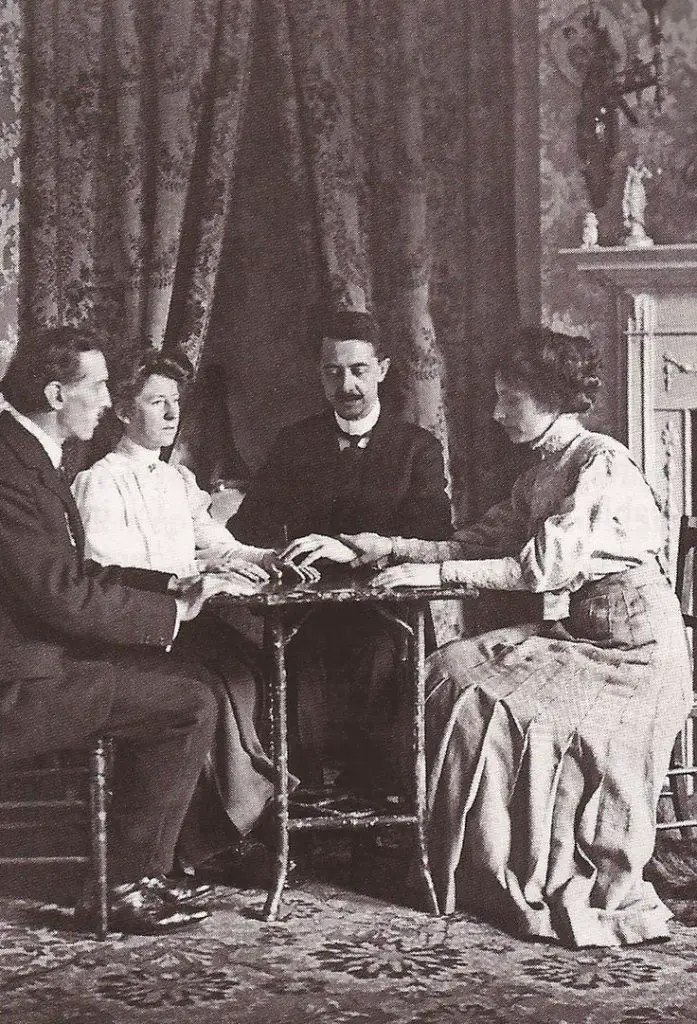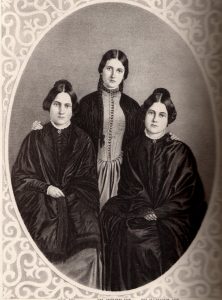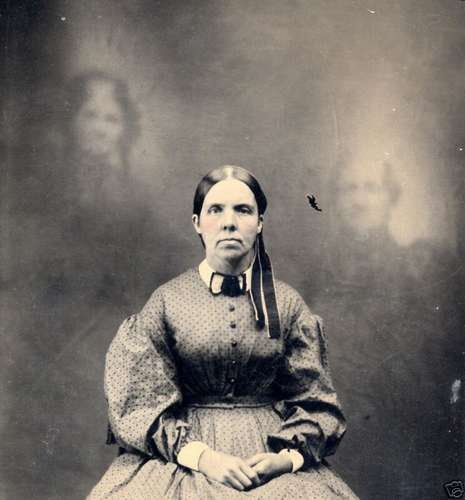Victorian Spiritualism means the belief that humans can communicate with the dead. Its golden age is said to be during the 19th century because most of the modern spiritualism trappings like tarot cards, Ouija boards, and psychic shops started during this time.

As far as Victorian spiritualism is concerned it encompassed plenty of odd practices which fell out of popularity like seances and spirit photography.
Table of Contents
What Was the Victorian Spiritualism?
All through the Victorian era, there was a noticed movement that was away from the standardized religions and great respect for death. Perhaps the biggest religious movement in the Victorian era was spiritualism.
It revolved around communication with the dead through different mediums. It was considered a scientific movement and did not ask anyone to have blind faith.

Some of the great thinkers like biologist Alfred Russel Wallace and Sir Arthur Conan Doyle got attracted towards spiritualism. Sir Arthur was fascinated by the possibility of communicated with the dead and promoted it between knocking out Sherlock Holmes stories.
On the other hand, even though many spiritualists were Christian, it was not an actual form of Christianity.
Women and Spiritualism
Most of the mediums were women. It was the time when women wore tight corsets and were controlled by rigid societal rules and obligations. They were struggling to have some say and position of their own in society as well as to have some power. Throughout society, women had no place of authority.
However, they were more likely to attend church and were the main initiators in families who attended church regularly. Despite all this, they did not have any real position of prominence in church.

It was on 31st March 1848 that two sisters Kate and Margaret Fox announced that they were going to contact the spirit world. They were joined by their third sister in no time.
Soon the word spread and a new religion emerged, spiritualism which was a mixture of liberal nonconformist values along with fireside chats with dead people. Even after the confession of Fox sisters in 1888 that they had faked everything, the movement could not be crushed.
Spiritualism in Britain
The interest in spiritualism spread soon in Britain and it was in 1852 that Mrs. Maria Hayden arrived in the UK as the first working spiritualist medium. Although Maria Hayden attracted a lot of criticism and antipathy, she carried on with her spiritual works by holding seances and demonstrating mediumship.
Public interest continued to grow and the first spiritualist publication was “The Yorkshire Spiritualist Telegraph” published in 1855. In addition to this, the first Spiritualist Lyceum was founded in Nottingham in 1866 by Mr. J Hitchcock with an intention of making spiritualism as a part of religious education and while studying philosophy.
The main reason behind Victorian British getting attracted towards spiritualism is that during the mid-19th century they were going through industrial revolution due to which many people were leaving their land and heading towards towns to work in factories, mines, and shipyards.
It was the time when great social reformers and philanthropists rose and this is when spiritualism appealed to the people because it gave importance to a personal experience to spirits and the unswerving knowledge of the afterlife.
Victorian Occult
It showed that there is survival after the physical death of the body. This is the reason why even if the Victorian era is known for scientific and technological progress, many Victorians were inclined to the paranormal, supernatural and occult.

The most popular forms in the Victorian era are mesmerism, electro-biology, clairvoyance, thought reading, crystal gazing and above all, spiritualism. Victorian spiritualism is also known as a spiritualist movement which attracted people from different social classes.
Even Queen Victoria and Prince Albert participated in spiritualist seances. In the 1860s, it became a part of Victorian subculture through different mediums, pamphlets, specialist newspapers, societies, treaties, public and private seances.
Famous Victorian Spiritualists
Anne Horniman
Anne Horniman, who had a great influence on British theatre, was a great believer in tarot and used the cards to guide her business decisions. She even claimed to stop by Saturn to visit and chat with locals.
It is not known whether she with her partner truly believed their journeys were real. It is said that their writings were more about the exploration of light and sense rather than on a physical journey.
Madame Blavatsky
Helena Petrovna Blavatsky was a little strange child having invisible friends who she called hunchbacks. She often used to hold and stroke birds till they fell asleep.
Her marriage was a brief affair after which when she emerged in society, she claimed to have gained spiritual and telepathic abilities of all kinds. She founded the Theosophical Society in 1875.
Anne Besant and Charles Leadbeater
Anne Besant and Charles Leadbeater were strong supporters of Blavatsky. Besant was separated from her husband and with the Anglican priest, Leadbeater they moved to India where they adopted the idea that elements of Hinduism and Buddhism could be combined to reach out to the otherworldly.
Anna Kingsford
Anna Kingsford, president of the Theosophical Society, was something of a contradictory figure. She was one of Britain’s first female doctors and among the driving forces behind the development of animal rights. She claimed to have talked to fairies, traveled through time and space as well as she also channeled the vision of the creation of universe and more.
Allan Kardec
Allan Kardec differentiated between spiritualism and spiritism. He believed that spiritualism was something that already exists in a person’s soul and he was not after that. He believed that spirits can be made evident and some can even be touched. According to him, spirits remembered connections, friendships, and past incarnations.
More Info On- History of Corset and Corset Punishments, Arthur Conan Doyle, Supernatural Victorian Era
